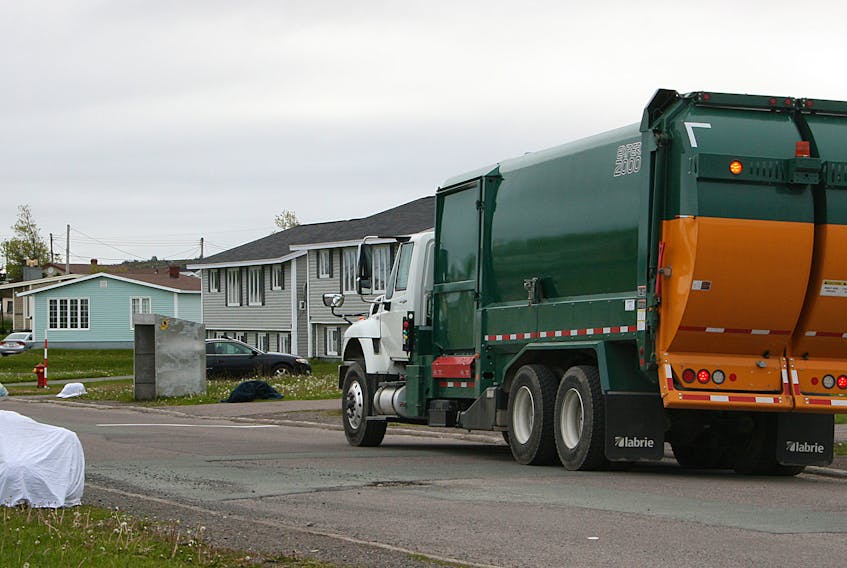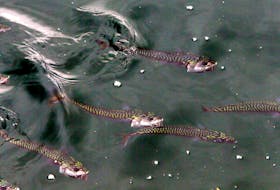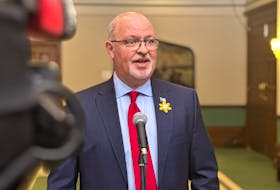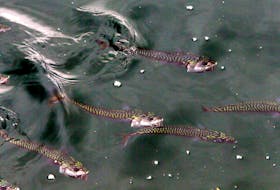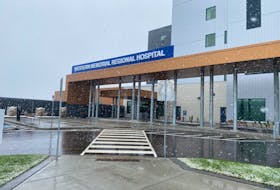MARYSTOWN, N.L. — Harold Murphy says a lined landfill for the Burin Peninsula’s waste has always been a no-brainer to him.
The chair of the Burin Peninsula Regional Service Board is even more convinced since recently receiving a new report from Marystown-based consultant firm Edwards and Associates.
The service board asked the company to complete an update of its 2008 study of waste management options for the Burin Peninsula, revising costs and factoring out subsidies for transportation as government has since taken that possibility off the table.
“I’m pretty confident that what Edwards and Associates have in their report is accurate,” Murphy told The Southern Gazette on Friday, Feb. 1.
Options and costs
Currently, the service board charges towns in the region $170 per household for waste collection. A $90/metric tonne tipping fee is charged for commercial waste brought to the board’s unlined landfill site near Jean de Baie.
The 2018 report by Edwards and Associates looks at four options.
One would see a transfer station located on the Burin Peninsula with all garbage trucked to the Robin Hood Bay waste site on the Avalon Peninsula. The report estimated that option would increase the per-household fee to $287.30 while commercial tipping fees would climb to $177.77.
Another option considered the cost of locating a transfer station in the region for waste along with a local composting facility for organic materials and paper. That route would increase the residential cost to $308.09 per household and require a commercial fee of $173.77/metric tonne.
Meanwhile, the Edwards and Associates’ report calculates the per-household residential fee for a lined landfill located on the Burin Peninsula at $201.33 with a commercial tipping fee of $96.17.
A fourth option looked at both a lined landfill on the Burin Peninsula as well as a local composting facility. Edwards and Associates estimated the board would need to charge $232.41 per household and a $101.94/metric tonne commercial tipping fee in that scenario in order to be able to operate.
Supports board’s case
The Burin Peninsula Regional Service Board has long held the position a lined landfill is the best option for the area.
Murphy says that case is made event stronger with the updated report by Edwards and Associates.
There are currently roughly 9,200 houses on the Burin Peninsula, and last year 15,704 metric tonnes of commercial waste passed over the scales at the Jean de Baie site, he said.
Using the report’s figures, Murphy says trucking waste from the Burin Peninsula to Robin Hood Bay would drive up the board’s operational costs by roughly $800,000 a year.
Commercial costs would climb by approximately $1.2 million, which Murphy suggested would likely be passed on to the customers of those businesses in most cases.
Combined that’s a $2-million hit to the region, Murphy says.
It would cost the provincial government roughly in the range of $5 million to $5.5 million, meanwhile, to construct a lined landfill with a leachate treatment facility on the Burin Peninsula, according to Edwards and Associates. The cost of a transfer station would be approximately $4.5 million, Murphy says.
“So the costs are almost neutral to government from a capital perspective,” he said.
“(It’s) a little bit more for us to have a lined landfill facility, but when you factor in that $2 million extra cost for the region, one year would pay for giving us a transfer station verses a lined landfill.”
Under the current provincial waste strategy, capital costs for setting up a transfer station or waste site is covered by the government, while operating costs fall to the regions, according to Murphy.
In addition to the lower cost, Murphy sees a couple of main reasons why a local lined landfill for the Burin Peninsula is the way to go.
It would create more jobs than a transfer station for one, he says. Secondly, he points out commercial fees could become a locational factor for businesses deciding where to set up their operations.
Report was accurate
Murphy says the board sent a copy of the new report to Placentia West-Bellevue MHA Mark Browne this week.
They have held off sending it to the Department of Municipal Affairs and Environment until more details are known about the procedure for the provincial government’s impending waste management strategy review.
Murphy says once government officials have a chance to review the report’s findings, it’s quite possible they may disagree with them.
Edwards and Associates’ original report in 2008 was more accurate than several peer review studies conducted on behalf of the province that suggested waste management could be implemented in the region at much lower costs, however, Murphy says.
“We’ve been operational now on the whole Burin Peninsula (for) three or four year, for sure, and our operational costs have certainly borne out almost to the cent what Edwards and Associates estimated in the first report what it would cost to do it,” he said.

